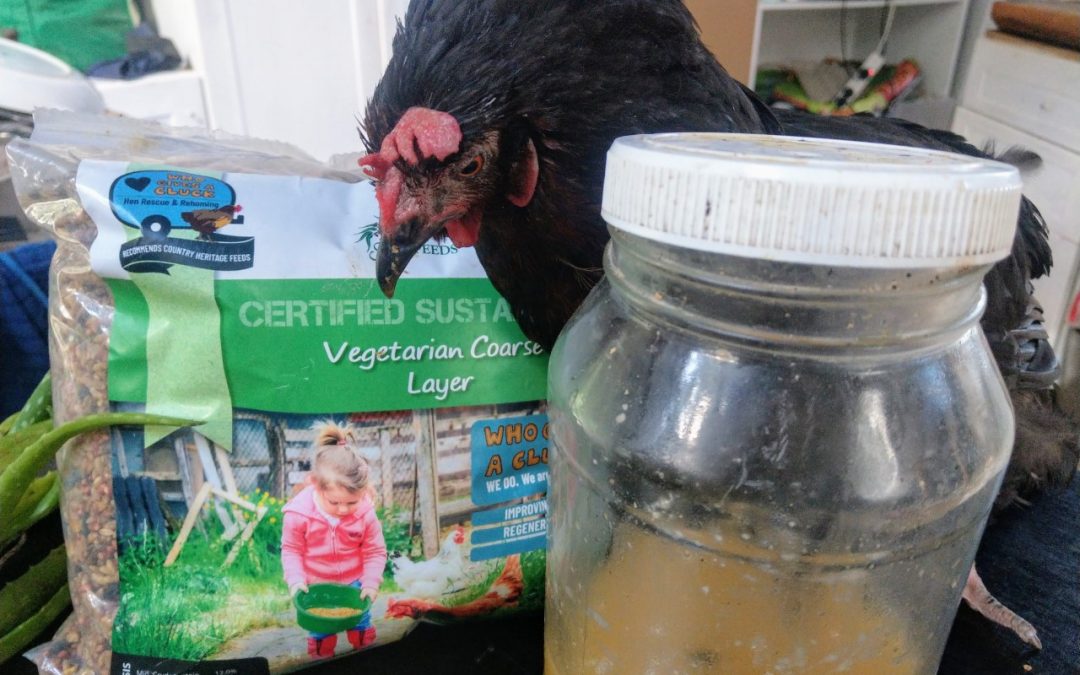Fermenting your hen Feed
For a little extra preparation time each day you can serve your hens fermented hen feed, save yourself $ and give your hen the best feed ever!
WHY?
1) You can save up to 40% & more, on your hen feed costs because the fermenting can double the volume of the grains & because the fermented grain is dampened it means you don’t get dry grains and seeds pecked and spread all over the yard!
2) In the same way fermenting works for us, fermenting hen feed, improves the nutritional value of the feed for the hens so it increases the protein content and the overall feed is more usable (bioavailable) to your hens.
3) The water creates an anaerobic (no oxygen) environment so beneficial bacteria will start to break down the feed. This process maximises the nutritional content of the feed, making it more bioavailable, increasing the amount of good bacteria such as lactobacilli. Same sort of stuff you see in probiotics.
4) With all the illnesses our hens can suffer from, digestive health is a prime cause of their ills. Fermented hen feed supports your hens digestive health by increasing the prebiotics & probiotics in their feed.
HOW:
Check out the quickie instruction video and below are the step by step instructions:
1) While you normally would give your hen 1/2 cup or more of dry grain feed each per day, when making fermented feed, you’ll need much less. You can start with 1/2 cup but day by day reduce the amount you use down to 1/3 cup per hen per day.
2) Put your grain into a glass container, cover with water, then a bit more so you have plenty of room for the seed to increase in size. Put the lid on loosely, so gases can still escape. Put aside for two days.
3) Make your next new batch the following day. Stir the mixes twice daily because that helps the process and avoids mould forming. Add more water if needed, so all grains are covered with water.
4) If it’s bubbling, that’s the fermentation working. It should be smelling like sour dough, sweet, sour, pungent smell. If it becomes mouldy (mostly because there was not enough water covering the feed) you’ll need to throw it out and start again. Ouch!
5) On day two, drain the feed using a strainer OR a length of panty hose with a knot in the end. If you have more than 10 hens you can use buckets (see my other post on larger flock fermentation). The feed is like porridge, well drained and a good consistency. Keep the mother water that you drained.
6) Wash out the jar, put in the next lot of hen feed in (whittling down to 1/3 cup per hen), put in some of the mother water you just drained off, and refill with water again. Keep repeating the process
Please let me know if you’ll give this a try. Please do! For you and your hens. J
Follow Who Gives A Cluck on utube for informative short videos on all things hennish!!!
https://youtu.be/xUYJtZi4x2E
Eggstraordinary Weekly Digest
Want some fun hen stories, the latest info on how to look after your hens and all things hen worthy?


I really like your writing style, excellent info , appreciate it for putting up : D.
Thank you so much for the information Julie!! I had no idea fermentation is such an easy process! Our chickens are loving it, and I bet feeling much better too. Looking forward to less seed wastage as well!